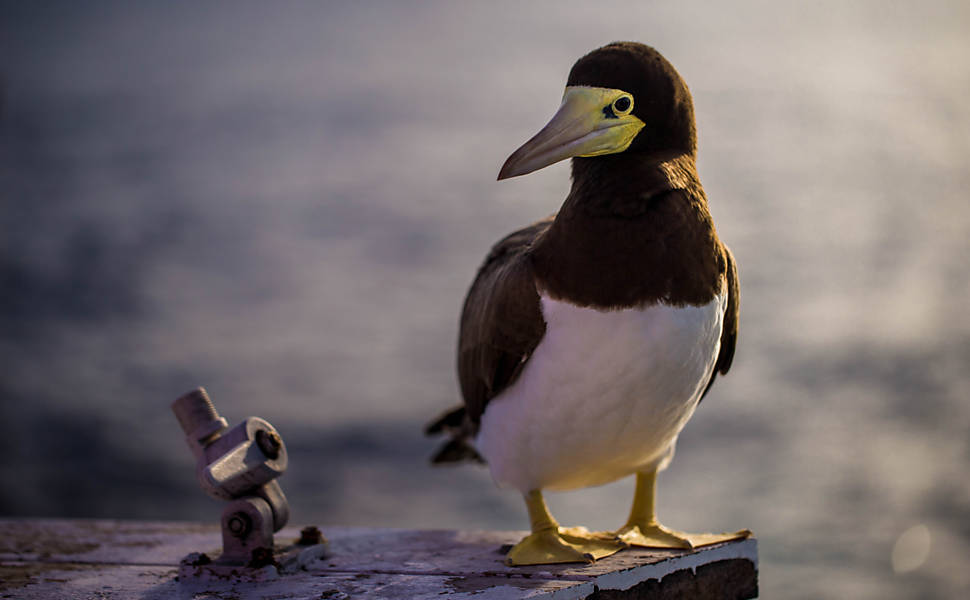Latest Photo Galleries
Brazilian Markets
17h31 Bovespa |
+1,09% | 128.509 |
16h43 Gold |
0,00% | 117 |
17h00 Dollar |
-0,83% | 5,0697 |
16h30 Euro |
+0,49% | 2,65250 |
ADVERTISING
Easternmost Territory in Brazil, the São Pedro e São Paulo Archipelago Has Features that Draw Scientists' Attention
05/15/2017 - 12h42
Advertising
NAIEF HADDAD
MARCUS LEONI
SPECIAL ENVOYS TO THE SÃO PEDRO E SÃO PAULO ARCHIPELAGO
"This archipelago is not for beginners," says zoologist Estevam Araújo, 37, referring to the São Pedro e São Paulo set of islands, the easternmost point of the entire Brazilian territory, where he stayed for two weeks.
"It is a hostile environment that requires much preparation. On the other hand, that is what I was expecting - that it would preserved," says Araújo, who received his doctoral degree from the Federal University of Rio de Janeiro.
His study is on the Collembola, a tiny insect that feeds on algae, fungus and decomposing animals.
To prepare to work in the archipelago located 1,100 kilometers from Natal, the capital of the state of Rio Grande do Norte, Araújo participated in a training project for one week organized by the Brazilian Navy. He also underwent a thorough health evaluation. Before him, more than 1,300 researchers from 20 Brazilian universities received the same preparation.
Since it was inaugurated, in 1998, the scientific base has received four scientists at a time. They stay on the islands for two weeks on average.
The difficult access does not stop some of them from becoming "regulars" on the rocky islands halfway from the African continent. Jorge Eduardo Lins de Oliveira, of the Federal University of Rio Grande do Norte, has become an expert on the place.
"The archipelago is like a 'pit stop' where the fish stop and feed. Also, as it is located in an isolated area, there are many living organisms that are only found there," says Oliveira.
Translated by THOMAS MUELLO




